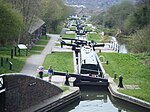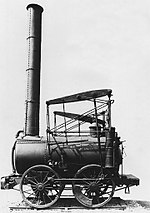Brierley Hill

Brierley Hill is a town and electoral ward in the Metropolitan Borough of Dudley, West Midlands, England, 3 miles south of Dudley and 1 mile north of Stourbridge. Part of the Black Country and in a heavily industrialised area, it has a population of 13,935 at the 2011 census. It is best known for glass and steel manufacturing, although the industry has declined considerably since the 1970s. One of the largest factories in the area was the Round Oak Steelworks, which closed down and was redeveloped in the 1980s to become the Merry Hill Shopping Centre. Brierley Hill was originally in Staffordshire. Since 2008, Brierley Hill has been designated as the Strategic Town Centre of the Dudley Borough.
Excerpt from the Wikipedia article Brierley Hill (License: CC BY-SA 3.0, Authors, Images).Brierley Hill
Bell Street South (Access to Saint Michaels),
Geographical coordinates (GPS) Address Nearby Places Show on map
Geographical coordinates (GPS)
| Latitude | Longitude |
|---|---|
| N 52.4795 ° | E -2.1245 ° |
Address
Saint Michaels Brierley Hill
Bell Street South (Access to Saint Michaels)
DY5 3EX , Brockmoor
England, United Kingdom
Open on Google Maps








